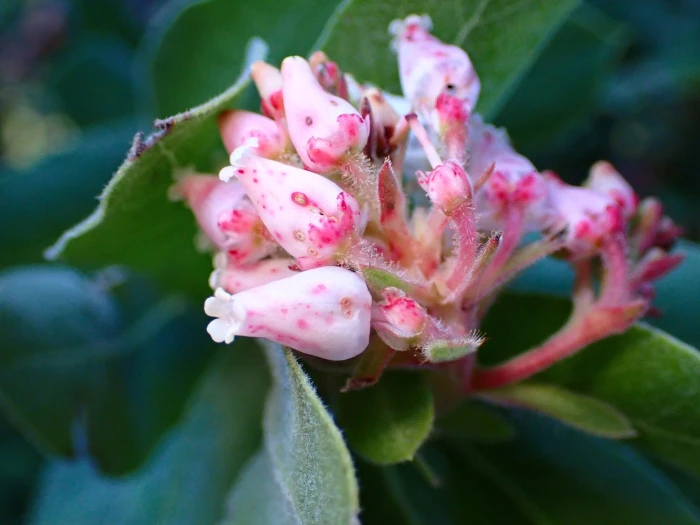Kings Mountain Manzanita
(Arctostaphylos regismontana)
Kings Mountain Manzanita (Arctostaphylos regismontana)
/
/

Cricket Raspet
CC BY 4.0
Image By:
Cricket Raspet
Recorded By:
Copyright:
CC BY 4.0
Copyright Notice:
Photo by: Cricket Raspet | License Type: CC BY 4.0 | License URL: http://creativecommons.org/licenses/by/4.0/ | Rights Holder: Cricket Raspet | Publisher: iNaturalist | Date Created: 2023-02-06T13:34:51-08:00 |

























Estimated Native Range
Climate Requirements for Waxahachie, Texas
| This Plant | Your Site | Plant Suitability for Your Location | ||
|---|---|---|---|---|
| • Precipitation | 17" - 42" | 37" | Aquatic | Aquatic |
| • High Temp. | 70°F - 79°F | 96°F | Your summers may be too hot for this plant. | Too hot |
| • Low Temp. | 39°F - 43°F | 34°F | Your winter temperatures may be too cold for this plant | Too cold |
This plant may not grow well at your location - your precipitation is too high.
Summary
Arctostaphylos regismontana, commonly known as Kings Mountain manzanita, is an evergreen shrub endemic to the Santa Cruz Mountains in California. It is particularly adapted to the chaparral and mixed evergreen forests, often found on the northern slopes where granite and sandstone soils predominate. Kings Mountain manzanita typically reaches heights of 2 to 4 meters, with bristly, glandular stems that exude sticky resins. The dense foliage is composed of curved, oval-shaped leaves that are a deep green, adding to the plant’s visual appeal. During the winter to early spring, it produces open clusters of small, urn-shaped, white to pale pink flowers that are particularly attractive to native pollinators. The fruit is a hairy, sticky drupe that matures in the summer.
Kings Mountain manzanita is valued for its ornamental qualities, including its attractive bark, which peels in thin sheets to reveal a smooth, reddish underlayer. It is used in native plant gardens, as a specimen plant, or for erosion control on slopes due to its deep root system. This manzanita prefers full sun to light shade and requires well-drained soils; it is drought-tolerant once established, making it suitable for xeriscaping. While it is generally low-maintenance, it can be susceptible to fungal diseases in poorly drained soils. Gardeners should also be aware that the sticky resins can make handling the plant somewhat challenging.CC BY-SA 4.0
Kings Mountain manzanita is valued for its ornamental qualities, including its attractive bark, which peels in thin sheets to reveal a smooth, reddish underlayer. It is used in native plant gardens, as a specimen plant, or for erosion control on slopes due to its deep root system. This manzanita prefers full sun to light shade and requires well-drained soils; it is drought-tolerant once established, making it suitable for xeriscaping. While it is generally low-maintenance, it can be susceptible to fungal diseases in poorly drained soils. Gardeners should also be aware that the sticky resins can make handling the plant somewhat challenging.CC BY-SA 4.0
Plant Description
- Plant Type: Shrub
- Height: 6-10 feet
- Width: 6-10 feet
- Growth Rate: Moderate
- Flower Color: Pink, White
- Flowering Season: Spring, Winter
- Leaf Retention: Evergreen
Growth Requirements
- Sun: Full Sun, Part Shade
- Water: Low
- Drainage: Medium, Fast
Common Uses
Bee Garden, Bird Garden, Drought Tolerant, Hummingbird Garden, Low Maintenance
Natural Habitat
Endemic to chaparral and mixed evergreen forests on the northern slopes of the Santa Cruz Mountains in California
Other Names
Common Names:
Scientific Names: Arctostaphylos regismontana
GBIF Accepted Name: Arctostaphylos regismontana